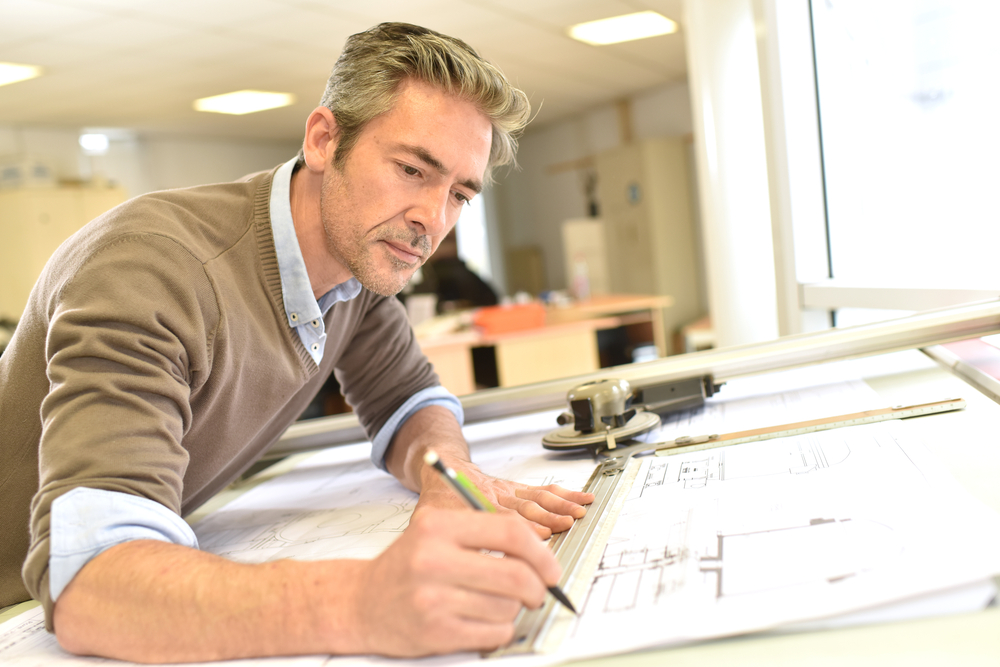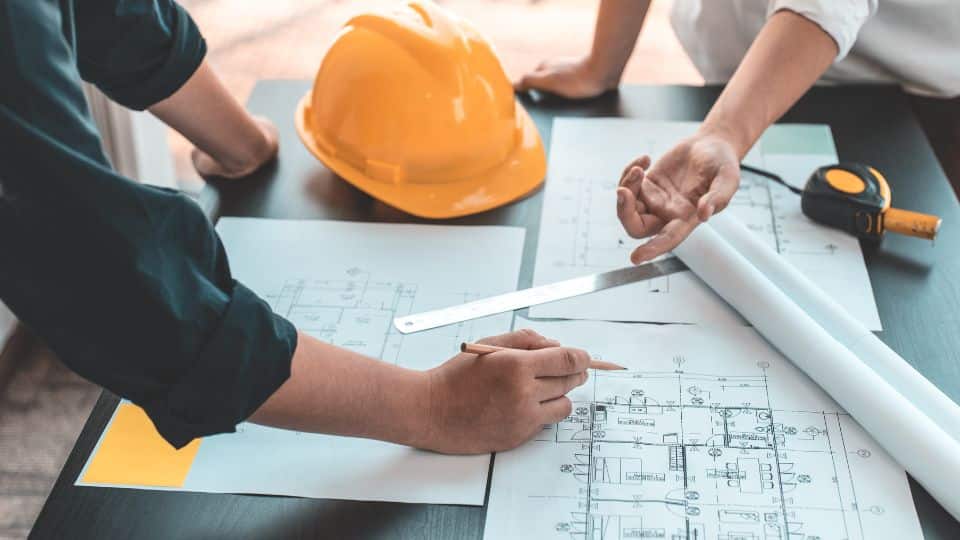Architect Insights on Balancing Form and Function
Architect Insights on Balancing Form and Function
Blog Article
Recognizing the Diverse Career Paths Available for Aspiring Architect
As a hopeful Architect, you have a globe of profession courses waiting for you. Whether you're attracted to standard style or the nuances of sustainable design, there's a particular niche that straightens with your rate of interests.
Traditional Architecture: Designing Structures and Structures
Conventional design focuses on developing structures and structures that blend performance with aesthetic allure. Your styles can show social heritage, showcasing regional customs while satisfying modern demands.
You'll develop abilities in preparing, model-making, and site analysis, allowing you to envision and interact your ideas successfully. Involving with clients, you'll need to recognize their vision and convert it right into viable designs.
Moreover, building codes and sustainability techniques are essential in your job, guaranteeing your structures are ecologically friendly and safe. As you expand in your career, you'll find opportunities in property, business, or perhaps repair jobs, each offering unique challenges. Welcoming typical style leads the way for a meeting career that admires the past while forming the future.
Urban Planning: Forming Neighborhoods and Public Spaces
As a hopeful Architect, you can play a crucial function as a city planner, changing how areas work and communicate. By employing neighborhood engagement approaches, you'll guarantee that residents have a voice in shaping their setting. And also, incorporating sustainable design concepts will aid produce areas that not just satisfy today's demands however likewise safeguard the future.
Role of Urban Planners
While several might believe of architects as the single dreamers behind structures, urban organizers play a crucial role in shaping the wider landscape of areas and public rooms. By teaming up with different stakeholders, you'll help make parks, transport systems, and property locations that promote social communication and ease of access. Your experience in spatial design and area characteristics enables you to envision future growth while maintaining cultural heritage.
Community Interaction Techniques
Reliable community interaction strategies are essential for city planners to assure that the voices of locals are heard and valued in the planning process. To promote meaningful discussion, you must focus on open discussion forums and workshops where community participants can share their ideas and worries. By proactively including and listening feedback, you'll produce spaces that show the community's demands, inevitably leading to even more sustainable and effective urban settings.
Sustainable Layout Principles
When making urban spaces, incorporating lasting design concepts is vital for producing environments that thrive both ecologically and socially. Think about integrating eco-friendly areas, like yards and parks, to enhance biodiversity and improve air quality.
Designing with water conservation in mind is also essential-- consider rain yards and absorptive surface areas to take care of stormwater. Entailing area members during the preparation process warranties that the areas you create meet their requirements and motivate social interaction. By embracing these principles, you'll add to dynamic, lasting urban landscapes that profit everybody.

Landscape Design: Producing Lasting Outside Environments
As you explore landscape architecture, you'll discover vital layout concepts that develop stunning and functional outside rooms. Sustainable techniques play an important duty in guaranteeing these atmospheres flourish while reducing ecological influence. And also, you'll locate a range of occupation possibilities that enable you to make an actual difference in just how individuals connect with nature.
Style Concepts in Landscape
Recognizing layout principles in landscape architecture is vital for developing lasting outdoor environments that balance with nature. You'll need to contemplate components like percentage, balance, and range to ensure your layouts feel cohesive and inviting. Incorporating indigenous plants not just enhances biodiversity however additionally lowers water usage, making your landscape resilient. Think of the circulation of area and how individuals connect with it; paths and seating locations should welcome exploration and relaxation. Additionally, focus on seasonal adjustments, making with products that match the environments year-round (Architect). By focusing on sustainability and visual appeals, you can develop exterior rooms that enrich the community and advertise well-being. Accepting these principles will certainly set a strong structure for your profession in landscape architecture.
Lasting Practices Introduction
Sustainable practices in landscape architecture not just concentrate on looks however also prioritize ecological health and wellness and source preservation. By incorporating indigenous plants, you boost biodiversity and lower the demand for chemical fertilizers and chemicals. Carrying out efficient irrigation systems helps preserve water and lessens runoff, protecting close-by environments. You can design spaces that promote dirt health, such as utilizing organic materials and practicing permaculture principles. In addition, integrating eco-friendly infrastructure, like rain yards and permeable pavements, help in stormwater administration and decreases city warmth. When you produce exterior settings with sustainability in mind, you contribute to a healthier earth and give spaces that promote area connection. Inevitably, these techniques guarantee your styles why not look here profit both people and the setting for years to find.
Job Opportunities Expedition
With a strong structure in sustainable practices, landscape architecture provides a variety of occupation paths that enable you to make a purposeful effect on the environment. You might function as a landscape designer, developing aesthetically pleasing and functional exterior rooms, or focus on ecological remediation, helping to revitalize damaged ecosystems. Urban coordinators often work together with landscape architects to produce environment-friendly areas in city setups, improving city livability. If you're enthusiastic regarding education and learning, think about coming to be a landscape design instructor, inspiring future generations. Furthermore, you could collaborate with nonprofits concentrated on ecological sustainability or engage in research study to introduce new techniques. Each path not just shapes beautiful environments but likewise fosters a healthier planet for future generations.
Lasting Style: Concentrating on Eco-Friendly Practices
As you discover your occupation in architecture, accepting green methods can establish you apart in an affordable field. Sustainable style concentrates on creating structures that lessen environmental effect while improving passenger wellness. By integrating eco-friendly products, energy-efficient systems, and sustainable structure techniques, you'll contribute to a greener future.
Beginning by obtaining knowledge of green accreditations like LEED or BREEAM, which can bolster your credentials. Consider exactly how all-natural light, ventilation, and thermal effectiveness can maximize design. Work together with engineers and ecological specialists to introduce options that decrease waste and preserve resources.
Do not forget the value of community participation-- engaging local stakeholders can inspire styles that harmonize with the atmosphere. As clients progressively prioritize sustainability, your competence in environment-friendly techniques will not just attract tasks yet additionally meet your enthusiasm for liable architecture. Embrace this critical aspect of the occupation, and enjoy your profession thrive.
Historic Conservation: Safeguarding and Bring Back Cultural Heritage
While you begin on your architectural journey, think go to this site about the vital function of historic preservation in maintaining our cultural heritage. This area focuses on the protection and remediation of considerable structures, websites, and structures that tell the stories of our past. By taking part in historic preservation, you'll aid safeguard the architectural legacy that shapes neighborhood identification.
As a historic conservation Architect, you'll analyze historic importance and examine the problem of structures. You'll work closely with chroniclers and guardians to ensure genuine remediation methods are utilized. This job course permits you to mix creativity with research, enabling you to make options that value original materials and workmanship.
Your job not just contributes to sustainability by recycling existing buildings however additionally fosters a feeling of pride within areas. Accepting this course will certainly help you become a guardian of background, maintaining the stories and visit this web-site visual appeals that improve our lives.
Inside Architecture: Enhancing Indoor Spaces
Historic conservation and indoor architecture both share a dedication to improving the constructed environment, however they concentrate on various facets. While historic preservation highlights keeping a framework's cultural and historic value, interior design nos in on optimizing indoor areas for capability and appearances.
As an aspiring Architect, you'll discover that indoor architecture allows you to blend imagination with technological skills. You'll create rooms that not just look excellent yet additionally advertise comfort and effectiveness. This area includes comprehending exactly how light, color, and products connect within an area, impacting mood and use.
You'll service numerous jobs, from household homes to commercial workplaces, guaranteeing that each atmosphere satisfies the demands of its owners. By prioritizing user experience, you can change interiors into inspiring and functional areas, making a substantial effect on exactly how people communicate with their surroundings. Embrace the possibility to improve indoor environments and form the means individuals live and function.
Industrial Layout: Combining Functionality With Visual Appeals
Industrial layout plays a crucial function in creating items that flawlessly blend aesthetics with capability, making sure that what you use everyday is not only aesthetically attractive but additionally functional. As an aspiring Architect, you might immerse on your own in this field, concentrating on developing everything from furnishings to consumer electronic devices. Your work entails understanding customer demands, materials, and making processes, permitting you to create cutting-edge options that enhance daily experiences.
In industrial style, you'll frequently team up with marketing experts, engineers, and makers, making sure that your layouts are not only lovely yet also practical. You'll find out to balance type and function, focusing on use without sacrificing style. By developing your abilities in laying out, 3D modeling, and prototyping, you'll be well-equipped to bring your ideas to life. This occupation course provides a vibrant setting where creative thinking fulfills practicality, making it a rewarding option for designers thinking about forming the items of tomorrow.
Often Asked Questions
What Educational Certifications Do I Required to Become an Engineer?
To end up being an architect, you'll need a specialist degree in style, usually a Bachelor's or Master's. Furthermore, you'll need to complete an internship and pass the Architect Enrollment Evaluation to practice lawfully.
Are There Qualification Demands for Different Building Career Paths?
Yes, there're qualification demands for numerous architectural courses. Architect. You'll need to pass tests, total teaching fellowships, and in some cases seek specialized training, depending upon your chosen focus, like landscape style, metropolitan layout, or historic conservation
What Software Application Abilities Are Necessary for Architects Today?

How Can I Gain Practical Experience While Researching Design?
You can acquire sensible experience by interning at architectural companies, joining design competitors, volunteering for area jobs, or working together with classmates on real-world jobs. These possibilities boost your skills and build beneficial connections in the market.
What Job Opportunities Exist Outside Traditional Design Firms?
You can discover different work opportunities outside standard architecture firms, like city planning, interior decoration, landscape style, building monitoring, genuine estate growth, or perhaps functions in sustainability consulting. Each deals unique challenges and incentives.
Whether you're attracted to typical design or the subtleties of lasting design, there's a particular niche that lines up with your interests.When developing metropolitan areas, including lasting design principles is critical for creating environments that flourish both ecologically and socially.As you check out landscape design, you'll uncover essential design principles that produce useful and beautiful outdoor spaces.Comprehending design principles in landscape architecture is important for producing lasting outside atmospheres that balance with nature.In industrial design, you'll typically work together with marketing experts, designers, and suppliers, making certain that your styles are not only beautiful yet additionally viable.
Report this page